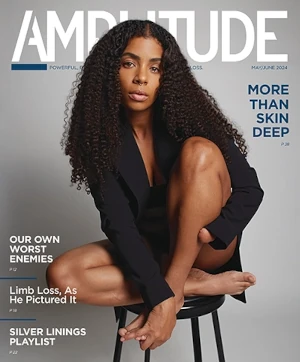Hollywood’s set of stock amputee characters is growing. Here’s where the studios are making progress, and where they’re still falling short.
by Diana Theobald
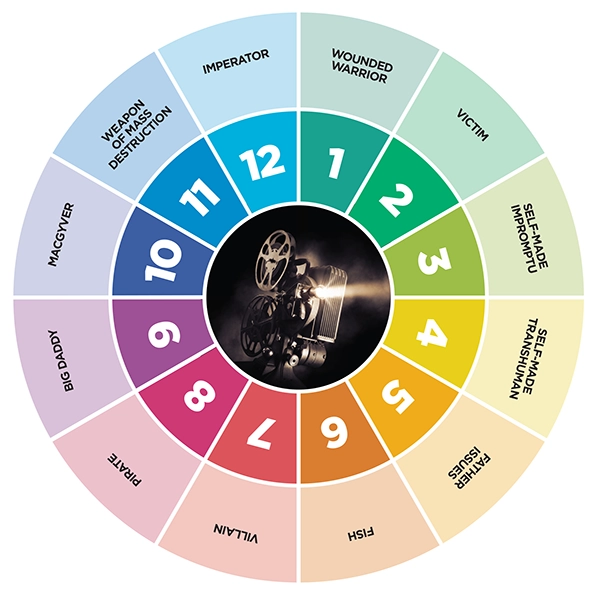
Are you a villain or a victim? For the longest time, you could sort every movie character with a limb difference into one of these two categories. Captain Hook? Villain. Lieutenant Dan? Victim.
But as more movies with limb-different characters get made, new archetypes are starting to emerge. After a not-at-all-scientific analysis of movie amputees past and present, I’ve identified 12 archetypes, each based on some form of a real-life amputee that Hollywood has gone and Hollywooded into something less real.
While our representation on the big screen still has miles to go (especially when it comes to casting us authentically), we are making progress. You can see it in the archetypes. Classics like the Villain, the Victim, the Wounded Warrior, and the Pirate are still going strong. But now we’re seeing new categories, such as the Big Daddy and the Imperator, that give audiences a broader impression of who amputees are and what the nondisabled world can learn from us.
I describe all 12 archetypes on the following pages. Each profile includes some advice for how my compatriots in creative fields can level up to develop more authentic, realistic amputee characters.
See if you can find yourself among these cinematic archetypes.
1. The Wounded Warrior
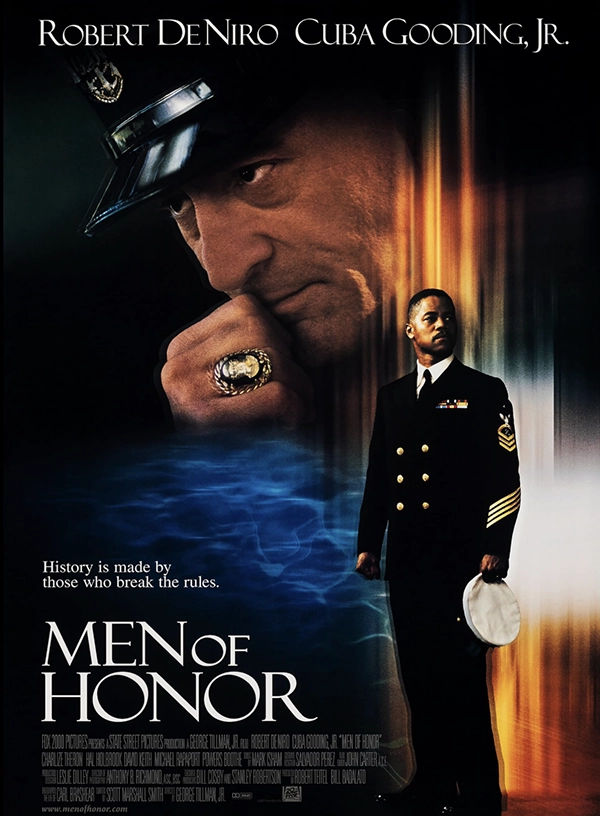
This is you if: You lost your limb serving in the line of duty.
Patron saints: Lieutenant Dan Taylor (Gary Sinise), Forrest Gump, 1994; Will Sawyer (Dwayne Johnson), Skyscraper, 2018; Homer Parrish (Harold Russell), The Best Years of Our Lives, 1946; Carl Brashear (Cuba Gooding, Jr.), Men of Honor, 2000
I had to start this list with the Wounded Warrior. Veterans are real-world heroes who deserve to have their stories told, so it’s no surprise that this category is well represented. This is also one of the few archetypes that has ever been portrayed by an actual amputee, Harold Russell.
Level up: Wounded Warriors aren’t going anywhere, nor should they. But there’s a downside to their prevalence in movies: Just ask any nonveteran amputee who’s been thanked for their service by a stranger. When an archetype is ubiquitous on-screen, people think it’s ubiquitous in the real world, too.
Fortunately, this has an easy fix: Tell more amputee stories! Mix it up like 2022’s Causeway did with its amputee character, James (played by Brian Tyree Henry), who is initially presumed to have lost his leg in the military but is revealed to have lost it by … well, we won’t spoil it for you.
Let’s also get more female Wounded Warriors on film. They exist (Sen. Duckworth, anyone?), and they deserve recognition.
Here on a technicality: The Black Knight (John Cleese), Monty Python and the Holy Grail, 1975
Anyone with a limb difference is contractually obligated to say “’Tis but a scratch” at least once in their lives. I’m sorry, I don’t make the rules.
2. The Victim
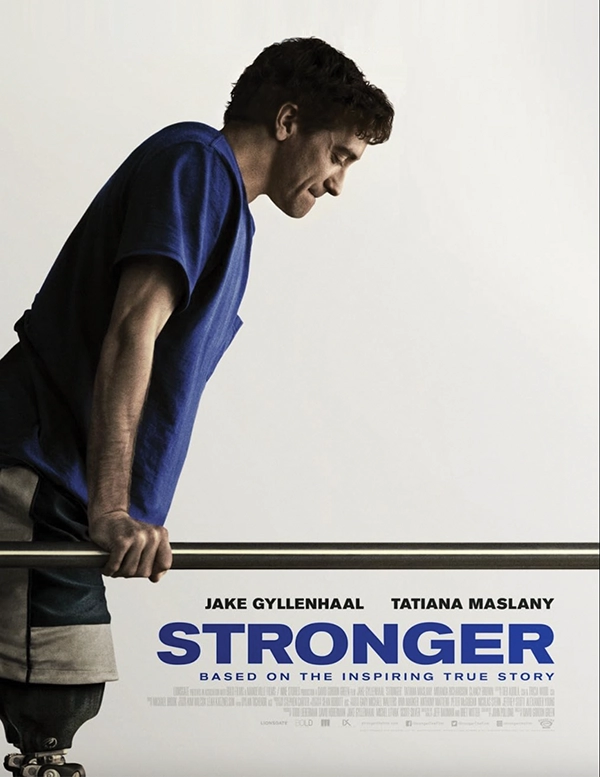
This is you if: You lost your limb in a traumatic accident, and it’s all anyone wants to hear about.
Patron saints: Jeff Bauman (Jake Gyllenhaal), Stronger, 2017; Stéphanie (Marion Cotillard), Rust and Bone, 2012
These are good stories, and in many cases, they’re true stories. If someone were to make a movie about me, this is probably where I would land.
These movies often show routine aspects of the Victim’s life, such as a job or a love interest, but only within the context of their amputation—they’re “normal” activities, but they’re not presented in a way that normalizes limb difference. Victim movies also tend to be preoccupied with whether amputees can still have sex. Little does Hollywood know that limb difference enhances abilities in the bedroom. It’s like how Daredevil has enhanced hearing. It’s a fact—tell everyone!
Level up: Diabetes and vascular disease are much more common causes of amputation than trauma, but they are practically invisible in movies, as are congenital limb differences. As great as Victim movies can be, a level-up would be to deem amputees worthy of representation even if they didn’t experience significant trauma.
3. Self-made, Impromptu
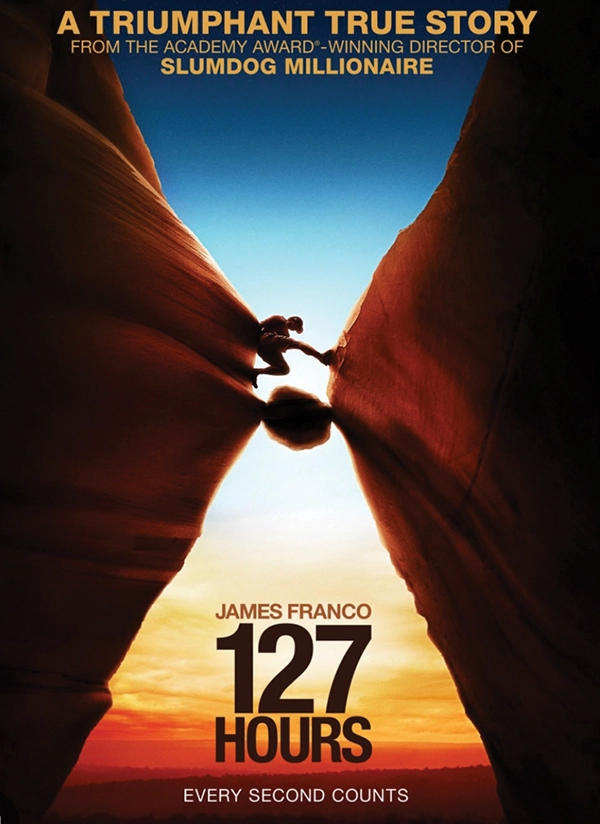
This is you if: You were caught between a rock and a hard place (physically or metaphorically) and you cut off your limb to survive.
Patron saints: Aron Ralston (James Franco), 127 Hours, 2010; Ash Williams (Bruce Campbell), Evil Dead franchise; Lt. Jean Rasczak (Michael Ironside), Starship Troopers, 1997
Here’s where the archetypes start to overlap. Aron Ralston could be classified as a Victim, given that 127 Hours tells a true story about limb loss unrelated to war. Starship Trooper’s Lt. Rasczak could be considered a Wounded Warrior, but he basically cut his own arm off so his shuttle could escape during battle. And Ash Williams only develops into the Weapon after replacing his hand with a chainsaw.
Self-amputation is a gruesome business, though, so it’s often exploited for horror—which is why this archetype merits a distinct category.
Level up: Ash versus his hand is iconic cinema, and I wouldn’t trade it for anything. Just keep in mind that only showing limb differences in the context of horror and trauma affects how we’re perceived in the real world. It’s why I can’t say “I’m an amputee” on a Zoom meeting without people cutting in with “Oh no, I’m so sorry!” and killing the vibe.
Random movie pitch: Friday the 13th set at an amputee camp. I’d be the first victim, but I can think of more than a few potential Final Girls with limb difference who’d make Jason sorry he messed with us.
4. Self-made, Transhuman
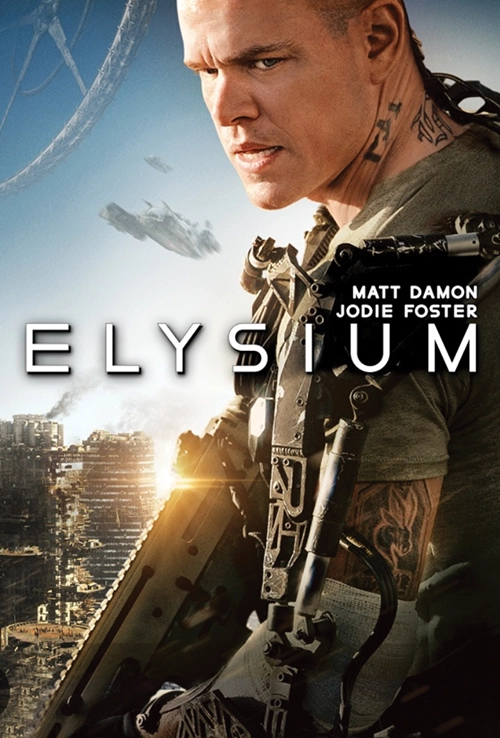
This is you if: You opted to have your limb amputated because a prosthetic limb was superior to your organic one.
Patron saints: The augmented humans of Ghost in the Shell, 2017, and Elysium, 2013
When people choose amputation in real life, it usually involves an unhealthy limb, failed salvage attempts, agonizing uncertainty, much deliberation, and many second opinions. But I’ve never seen that version of Self-Made at the cineplex. What I have seen is the futuristic sci-fi version, where prosthetic technology has advanced so much that you’d be stupid not to give up your perfectly healthy standard-issue appendage for the superior robotic model.
If I may rant: This idea might be the pinnacle of hubris. It took nearly four billion years of evolution to produce the human body. Do we really think our self-absorbed monkey-butts can do better than nature? And even if prosthetic limbs do outstrip flesh-and-bone limbs someday, insurance will never cover them.
Level up: Acknowledge that elective amputation is traumatic. Yes, I know, I just said we want less trauma. But by ignoring the genuine grief that comes with the decision to amputate a limb, the Self-made, Transhuman archetype takes it too far in the other direction.
5. Father Issues

This is you if: Your father or father figure was directly or indirectly responsible for the loss of your limb.
Patron saints: Luke Skywalker (Mark Hamill) and Anakin Skywalker (Hayden Christensen), the Star Wars franchise; Nebula (Karen Gillan), Marvel Cinematic Universe
In the real world, these rare occurrences are almost always terrible accidents (hopefully). In the movie world, they tend to be intentional acts, committed by fathers who’ve been corrupted by power.
The Father Issues archetype also seems to occur exclusively in outer space—something for Elon Musk to consider as he contemplates building human colonies on Mars.
Level up: As the on-screen gender balance of Villain representation shifts, so too should the on-screen gender balance of parents who cause their children to lose limbs. Moms can be corrupted by power, too.
6. The Fish

This is you if: You love being in the ocean so much that you might die if forced to stay too long on land.
Patron saints: Nemo (Alexander Gould), Finding Nemo, 2003, and Finding Dory, 2016; Winter, Dolphin’s Tale, 2011; Bethany Hamilton (AnnaSophia Robb), Soul Surfer, 2011
This could also be you if you simply lost your limb while in the water, but a genuine love of the ocean seems to be a throughline. Just keep swimming!
Level up: Animal representation is wonderful for kids; Finding Nemo did inspire the Lucky Fin Project, after all. But I would like to challenge kid-focused media to show more limb-different humans wearing real prosthetic arms and legs. Kids are particularly susceptible to what they see in movies, and while we love Nemo, he’s not going to have the same impact as a limb-different Disney princess would.
7. The Villain
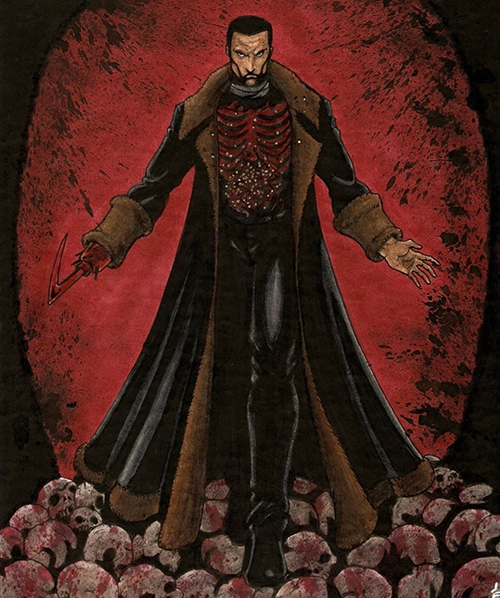
This is you if: You capitalize on your limb difference to incite fear in your enemies.
Patron saints: Dr. Julius No (Joseph Wiseman), Dr. No, 1962; Candyman (Tony Todd), the Candyman franchise; Grand High Witch (Anne Hathaway), The Witches, 2020
Quick story time: I was working for Marvel when I lost my leg. It did not take long for me to realize that I was living an origin story. The question was: Would limb loss make me a hero? Or a Villain?
For the most part, people with limb differences are heroes. But every so often, even the most heroic of us has to embrace our Villain side. For example, I wear skirts to in-person meetings so people can clearly see my fake leg. Unless they know me, it makes them just a little bit afraid of me, and that gives me an advantage.
Look, I said it was a Villain move…. The key here is that becoming an amputee did not make me a Villain, nor did being a Villain make me an amputee. It’s just another tool in my arsenal, not a defining trait. The tendency in these movies is to portray limb difference and villainy as cause and effect, but that’s way too easy. More often, the limb difference is just thrown in as a cheap ploy to make the Villain look scarier (which I admit is how I’m using it). I would much rather just normalize limb difference already.
Level up: I’m calling for a moratorium on disabled Villains in general. It’s been done to death. Find something new!
8. The Pirate
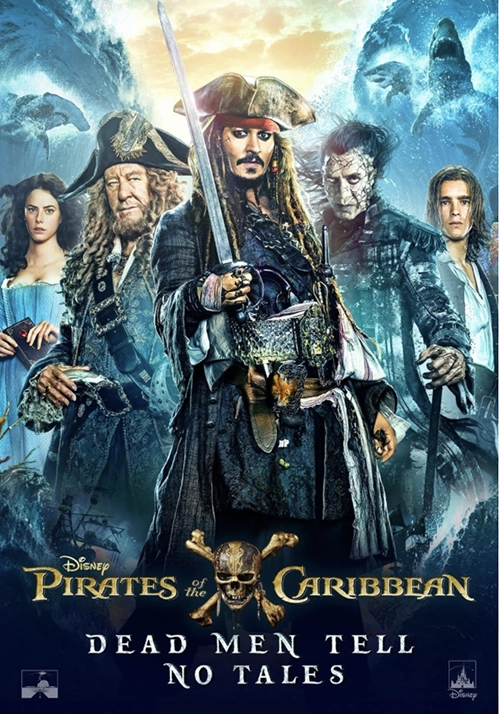
This is you if: You love plundering, swashbuckling, and rum. You may also swear a lot, enjoy a sea shanty now and then, or have an animal sidekick riding on your shoulder.
Patron saints: Captain Hook (multiple actors), every adaptation of Peter Pan; Long John Silver (multiple actors), every adaptation of Treasure Island; Hector Barbossa (Geoffery Rush), Pirates of the Caribbean: On Stranger Tides, 2011, and Dead Men Tell No Tales, 2017
Wait, aren’t Pirates just a subset of Villains? Not necessarily. It’s in the eye of the beholder. Are they plundering your goods? Then yes, you may call: “Villainy!” But if they’re stealing goods from a cruel monarch or an exploitative mercantilist, then Pirates are the good guys, the underdogs, stealing from the rich and giving to the poor…who happen to be themselves.
Whatever your perspective, the Pirate’s susceptibility to limb loss has been wildly overrepresented. But there is one positive takeaway: Increased representation leads to normalization. In a Pirate movie, you can be the captain and an amputee. I wish corporations were that inclusive.
Level up: I’m willing to bet 99 percent of amputees in period movies are either Pirates or Wounded Warriors, and 100 percent are male. I’m dying to see a historical female amputee. Where’s that long-delayed Virginia Hall biopic? How about a limb-different Lady in Bridgerton?
9. Big Daddy
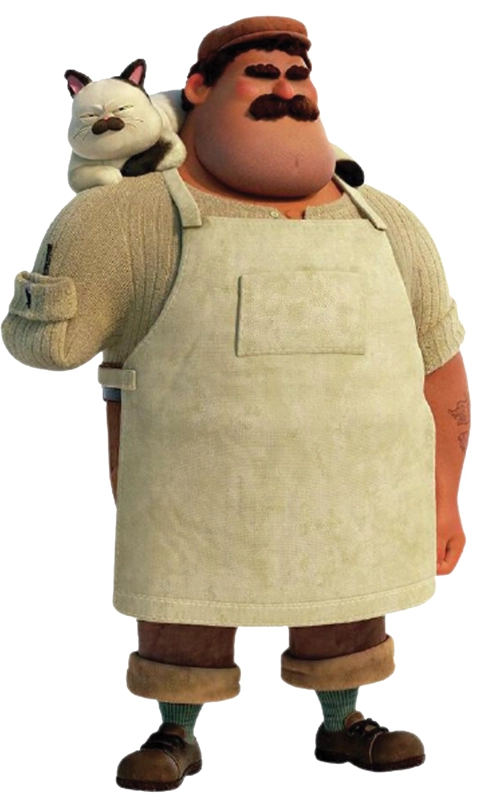
This is you if: You are an imposing limb-different individual with a soft heart, patiently (for the most part) raising the next generation.
Patron saints: King Fergus (Billy Connolly), Brave, 2012; Massimo Marcovaldo (Marco Barricelli), Luca, 2021
This might exclusively be a Pixar trope, similar to the overall Disney fascination with Brunos. It’s also evidence of how Hollywood is progressing, though. In less than ten years, the Big Daddy evolved from Fergus, a Wounded Warrior with a Pirate peg leg, to Massimo, a congenital amputee just living his life. Pixar even resisted the impulse to give Massimo a homemade prosthetic arm with a fishing pole attachment (much to the disappointment of toy companies, I’m sure).
The Big Daddy also feels like Disney’s restitution for Father Issues, seeing as the company owns both categories.
Level up: I was going to ask for a Big Momma with limb loss, but Disney took care of that on TV with Della Duck (Paget Brewster) in the Duck Tales reboot. So let’s keep this intersectional train going: Let’s see amputee mentors of different races and ethnicities, gender identities and sexual orientations, religious diversity, economic diversity, inclusive body types—the possibilities are endless.
10. The MacGyver
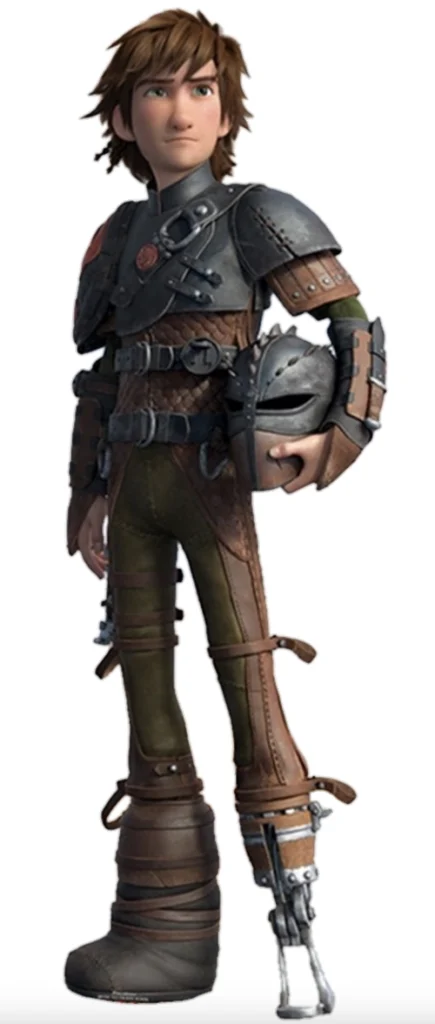
This is you if: You have a nonstandard prosthesis with modifications for your specific needs.
Patron saints: Hiccup (Jay Baruchel) and Toothless, How to Train Your Dragon franchise
In a world before carbon fiber, when skilled prosthetists were few but human ingenuity was plentiful, there was wood. Or iron. Or ice. Whatever material was abundant in your time and region forms the base of the MacGyver prosthesis. It’s then tricked out with functionality beyond walking, as seen in Hiccup’s leg (which converts to link with Toothless’s tail prosthesis) or Barbossa’s pirate leg, with an onboard rum dispenser.
Level up: Rum dispensers are cool, but have you seen a kid tie their shoe with one hand? Movies are missing out on the authentic MacGyvering in our community. As fun as imaginative movie limbs are, real-world ingenuity needs and deserves representation. Look at the actual adaptations and hacks that real amputees have come up with, and show that on-screen. And stop suggesting that my leg needs a can opener. I’m walking with a smooth gait; why isn’t that enough?
11. The Weapon of Mass Destruction
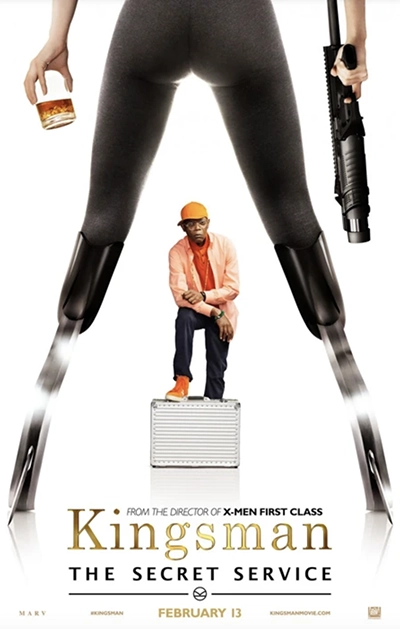
This is you if: You have a limb that is also a gun, sword, cannon, flamethrower, or anything else that would not get past TSA.
Patron saints: Bucky Barnes (Sebastian Stan), Marvel Cinematic Universe; Cherry Darling (Rose McGowan), Planet Terror, 2007; Gazelle (Sofia Boutella), Kingsman: The Secret Service, 2014
This archetype is action-moviedom’s dream and my nightmare. I trip over my dog way too often for sword legs to make sense. But the point of this archetype is not practicality. It’s all about what’s cool, and to Hollywood, regular prostheses are not cool. Hollywood is wrong, though.
There’s also something wacky going on with the female representation in this category. A suspiciously high percentage of all the female amputees on film are Weapons. I blame this on the same misogyny that gave us the corset and six-inch stilettos: People love a hot girl wearing something horribly uncomfortable.
Level up: I want more reality in my fantasy. What’s cooler: an able-bodied actor wearing a CGI arm with a machine-gun accessory, or an actor with a real limb difference reloading an actual gun with one hand? I think we all know the answer.
12. The Imperator
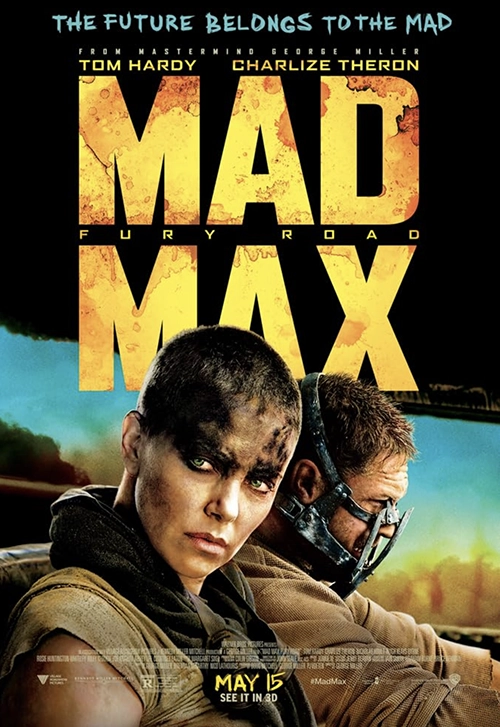
This is you if: No one knows how you lost your limb, and no one asks. The world is fire and blood, but you wander this wasteland in search of your better self. And you get the job done. You might also drive a 25-ton fuel tanker and/or spend a lot of time in the desert.
Patron saints: Imperator Furiosa (Charlize Theron and Anya Taylor-Joy), Mad Max: Fury Road, 2015, and Furiosa, 2024
Imperator Furiosa might have this category to herself for now, but other Imperators wait in the wings of television. I mentioned Della Duck, and I would also like to highlight Maya Lopez, aka Echo, who appears in Hawkeye (2021) and the upcoming spinoff series Echo (2024) and is played by real-life amputee Alaqua Cox. These are two television Imperators in need of feature-film debuts. They are female amputees, but they’re not sexualized, their limbs are functional, and their trauma is handled tastefully. They’ve got real things to do: people to save, crime syndicates to run, and treasure-obsessed duckling triplets to raise.
Level up: I’m so pumped for Echo. I loved her in Hawkeye, and I’m ecstatic that she’s getting her own series. We see so-called risks like this being taken in streaming TV, but not so much in the more conservative world of feature films. But that will change.
Entertainment is going through a bit of a financial identity crisis right now, which might make studios more risk-averse than usual for a bit. But having worked in a studio, in a role devoted to diversifying what we see on-screen, I know the landscape is changing. I helped build systems to generate more authentic characters, and they’re having an effect. Hollywood is creating new, better archetypes for us. And someday, hopefully soon, we will see an authentically cast limb-different main character on the big screen. They’ll wear a real carbon fiber prosthesis, not a lightsaber with a toaster attachment, and the sight of it won’t strike fear in people’s hearts.
This is my dream. Let’s write the script.
Diana Theobald is a freelance writer and diversity consultant. She has held roles in creative development and diversity & inclusion at Warner Bros. Discovery, Marvel, DreamWorks Animation, and NBCUniversal. Read more of her work at “The Crawl” on Substack at thecrawl.substack.com.



